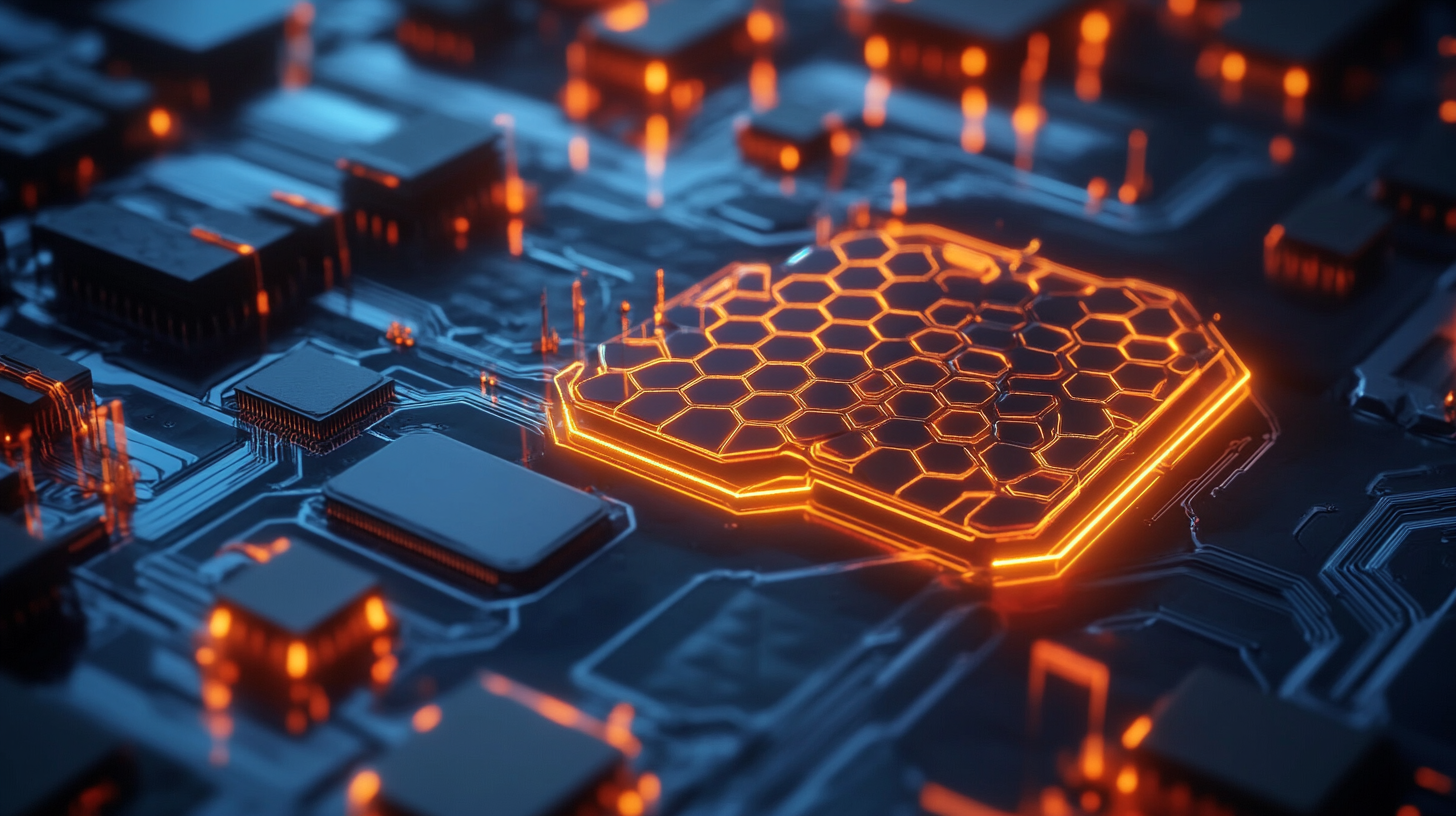With many of the recent changes in technological advancements happening through incorporation of new materials, one material that has captured the attention of researchers, engineers, and technologists alike is graphene, a one-atom-thick layer of carbon atoms arranged in a two-dimensional honeycomb lattice. Its unique electrical, thermal, and mechanical properties make graphene an attractive candidate for use in various electronic applications, specifically in the field of Graphene Integrated Circuits. These integrated circuits are expected to provide a paradigm shift in computing and electronics by offering higher speeds and lower energy consumption as compared to what is found with traditional silicon-based technologies.
Moving forward with the exploration of these new circuits, an evident fact is that graphene integration implications of performance enhancement go way beyond that. The opportunities presented in miniaturization and improved efficiency alongside flexible electronics design potentially create avenues across various sectors, consumer electronics, aerospace, and medical devices. This blog aims to update the reader on the current status of graphene integrated circuits, the potentials that lay ahead, and the challenges that stand in the way of realizing such a promise in changing the very face of technology.

The dawn of graphene-based integrated circuits is heralding a significant revolution in the technology of electronics, taking them into new frontiers of performance and sustainability. Their remarkable electrical conductivity and flexibility make the perfect use of graphene by exploring seamless integrated circuits as advanced components to be developed. The use of graphene is being studied for many different applications, from biodegradable flexible circuits to waterproof electronic designs. There are projects across Europe that experiment with new semiconductor technologies, with great interest in the increased efficiency of photonic chips transmitting light instead of electricity, as carbon technology becomes more integrated into the system. Not only does this give a new dimension to technology in performance, it also cuts power consumption as never imagined. It may even be the beginning of a new future for developing other such novel forms of ultra-thin and transparent electronics in various industries by combining graphene with other materials like borophene.

Graphene integrated circuits' circuit design and research will undergo a paradigm shift given their unusual electrical properties. Compared to traditional silicon materials, the ultra-high carrier mobility of graphene significantly boosts the performance of integrated circuits. This characteristic facilitates both higher processing speeds and energy-efficient designs, thereby paving the way for the next generation of electronic devices.
The more recently established graphene/Si CMOS hybrid integrated circuits aptly illustrate these advantages, combining the useful factors from each material and creating powerful functionalities. Researchers are also looking at the potential for integrating circuits seamlessly etched on graphene, thus further pushing the limits of circuit design. With its flexibility and exceptional ability to enhance stress performance in electronics, graphene is set to change the entire paradigm, enabling possibilities spanning applications from wearable technologies to sophisticated communication systems.

The graphene technology is very fast changing the nature of the world of integrated circuits, computing updrafts from the traditional silicon solutions. Recent research has proven that graphene (whether in microwave circuits or in photonic applications) is a performance darling that is simply a must for future devices, given its outstanding few-zeroing and piezoelectric resonating quantum capacitive behavior. By creating graphene ring oscillators, researchers have been able to design a basic function that could be beneficial in adding elements for higher circuit complexity and still using this amazing material's great electrical properties.
Meanwhile, the article noticed that carbon's vulnerability (most likely its interface) may be addressed by co-integration with other 2-D materials, for example, borophene, using heterostructure designs, to prepare for flexible, transparent, and ultra-compact electronics. A burgeoning interest in carbon-components underscores the goal of high electronic performance but also aligns well with the future of good development. As researchers explore these innovative materials, the foundlings of graphene technology in electronics appear brighter than ever, changing the very mode of business in the electronics sector.

The commercialization of graphene integrated circuits has to bear several challenges and limitations even though the material holds much promise. Indeed the special characteristics of graphene in sustaining electrical current and flexibility are good prospects for graphene as an alternative for copper in nanoscale interconnects. So the transition from lab-scale research to realistic applications is still riddled with problems.
The major issue is scaling up production techniques for graphene. Beyond that, high-performance graphene-based devices have been developed, such as integrated ring oscillators; however, translating those advances into mass production without compromising quality is a complex task. Compatibility with existing silicon technologies further complicates the integration of graphene and requires novel approaches for achieving seamless integration in electronic systems. Hence, the journey to realize complex graphene circuits continues to attract much research and development, with experts trying to circumvent these limitations to pave the way for future developments.
Graphene-integrated circuits are the future frontiers of innovations that are going to transform various technology sectors. Research has indicated that combining graphene with other two-dimensional materials will lead into an electronics revolution where super-thin, flexible, and transparent devices can be created. This then leads to the compact and effective electronic components that are a prerequisite in the next-generation gadget.
Further, the advent of graphene integrated circuits triggers a possibility for significant enhancement of other performance metrics. Demonstration of high gain and bandwidth in the graphene distributed amplifier clears the way for evolution in computing systems that are high in power and efficiency. Also, researchers are exploring more benefits of using graphene as a superior interconnect for semiconductor applications with a view to developing electronic systems that are sustainable and efficient. These developments promise a seamless combination of graphene in technology that meets everyday necessity; thus, it will change the way we begin to experience electronics.
Graphene offers ultra-high carrier mobility, leading to enhanced performance in integrated circuits, faster processing speeds, and energy-efficient designs compared to traditional silicon-based materials.
Researchers are developing graphene/Si CMOS hybrid integrated circuits that capitalize on the strengths of both materials to create powerful functionalities.
Recent advancements include the development of integrated ring oscillators using graphene inverters and improvements in microwave circuits and photonic applications leveraging graphene's unique properties.
Integrating these materials in heterostructures creates opportunities for designing flexible, transparent, and ultra-compact electronics, enhancing performance and sustainability.
Future applications include the development of ultra-thin, flexible, and transparent electronic devices, which could lead to more compact and efficient technology.
The use of graphene in applications such as distributed amplifiers demonstrates significant gains in performance and bandwidth, facilitating the development of powerful computing systems.
Graphene is being explored as a superior alternative for interconnects, which could lead to more sustainable and efficient electronic systems.
Graphene’s flexibility and durability can revolutionize circuit design, enabling new applications in areas like wearable technology and advanced communication systems.
There is a growing emphasis on carbon-based components, which enhances electronic performance and aligns with sustainability goals in the industry.
The integration of graphene into everyday technology is expected to redefine user interactions with electronic devices, making them more efficient and capable.